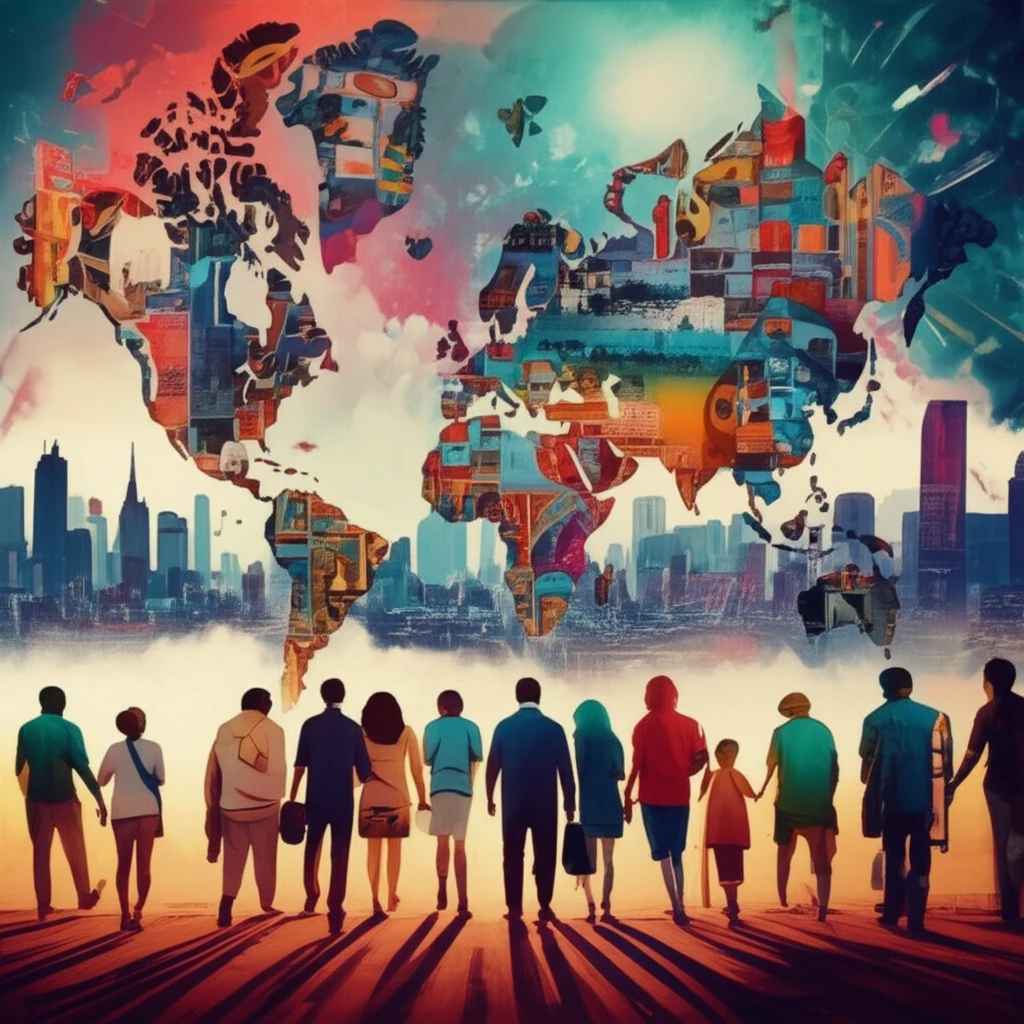
Culture Clash or Blend? How Migration Shapes Societies
"New research explores how migration and cultural exchange impact social diversity, revealing the surprising power of acculturation in maintaining cultural balance."
In an increasingly interconnected world, migration is a defining force, bringing diverse cultures into contact. While this mixing can enrich societies, it also raises questions about the preservation of unique cultural identities. How does migration impact the cultural landscape, and what mechanisms help maintain a balance between assimilation and cultural diversity?
New research draws parallels between genetic and cultural evolution to explore these dynamics. Population genetic models show that migration typically reduces genetic differences between groups. However, cultural evolution introduces a twist: acculturation, where migrants adopt the behaviors and norms of their new community. This process can counteract the homogenizing effects of migration, preserving cultural variation.
This article delves into models that quantify the interplay between migration and acculturation, examining how these forces shape cultural diversity. We'll explore the role of conformity, social learning, and other factors in maintaining cultural distinctions, offering insights into the dynamics of cultural change in our globalized world.
The Acculturation Equation: Conformity, Social Learning, and Cultural Traits

To understand how migration and acculturation interact, researchers have developed models that simulate these processes. These models consider several key factors:
- Number of demonstrators (n): This refers to the number of individuals from whom migrants learn. A larger 'n' can amplify the effects of conformity, as migrants are exposed to a broader range of local behaviors.
- Assortation (r): This factor accounts for the tendency of individuals to interact with culturally similar others. High 'r' values can hinder acculturation, as migrants primarily interact with others from their original culture.
Balancing Act: Preserving Cultural Diversity in a Mobile World
This research underscores the complex interplay between migration and cultural change. While migration can lead to the erosion of cultural differences, acculturation acts as a powerful counterforce, helping to maintain diversity even in highly mobile societies.
The models presented offer valuable insights into the factors that promote cultural preservation. Conformity, social learning, and social integration all play crucial roles in shaping the cultural landscape. By understanding these dynamics, we can develop strategies to foster inclusive communities that celebrate both shared values and unique cultural identities.
Ultimately, the challenge lies in finding a balance between assimilation and cultural preservation. Encouraging migrants to integrate into their new communities while also respecting and valuing their heritage can lead to vibrant, multicultural societies that benefit from the richness of cultural exchange.
